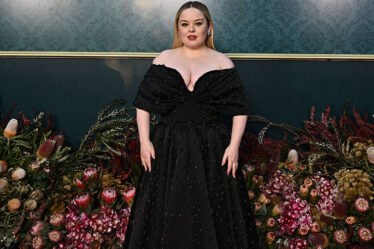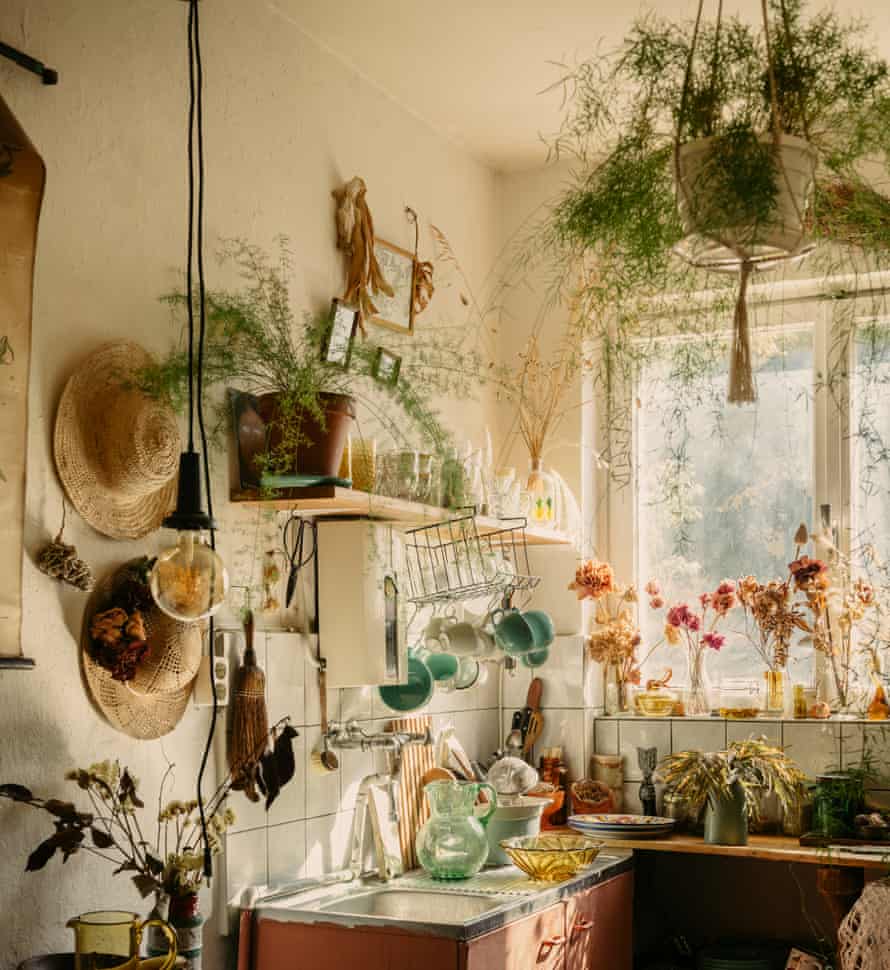
For centuries, flowers have been dried as a way of preserving them to create long-lasting arrangements that could be rearranged and combined in a fresh way. In this eclectic home, belonging to holistic mental wellness coach and floral stylist Maggie Coker, preserved grasses and wildflowers make a rather chic comeback, taking centre stage to greet visitors with their striking shape and form. For Maggie, the drive behind collecting and preserving flowers is about more than perpetuating beauty. Having created a sanctuary that resonates with joyful emotion, her collection demonstrates reuse in action and a reverence for nature’s gifts.
There’s something beautiful about the colour and texture that occurs when natural objects are dried. In Maggie’s peachy-pink home in East Berlin, there are dried plants all around that started off green and are kept for their strong shape – and they still look great. Maggie, a botanical stylist and founder of FlowerTalk Berlin, uses the language of flowers as a tool to benefit mental wellness, as well as floral artistic expression. “They speak their own language,” she says. “If you slow down and listen, you realise their magical therapeutic benefits.”
Maggie, who says that part of her collecting stems from not having the opportunity to replant, currently keeps 2m-high palm leaves in her living room, along with an array of vases containing pastel-dyed pampas grass, tall golden straw and Lunaria annua ‘Honesty’ laid out on the floor. Her do-not-ditch approach to floristry sees her drying poppies so delicate that it is almost a miracle they stay together, along with fuller blooms, such as roses and peonies, whose petals she gently prises apart to keep that fresh-flower feel.
“I like the texture of a dried flower,” she says of preserving these moisture-loving plants. “It’s definitely about the form they take on, even the resilience. Technically, it’s difficult. There are certain flowers born to be dried, but flowers whose stems hold a lot of water – these are tricky.”
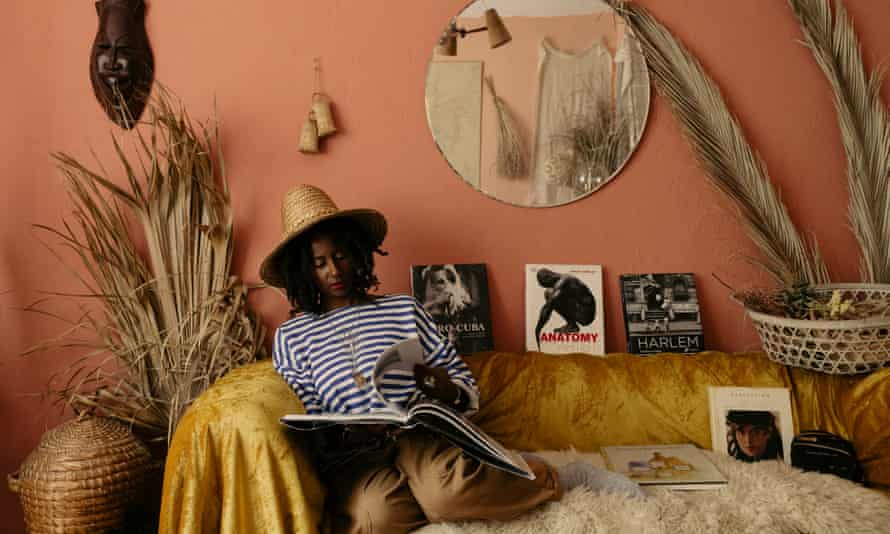
There are several reasons why Maggie collects flowers and dries them. “It’s something that started years ago, while working as a florist,” she says, explaining how she would rescue flowers from the bins after a wedding or a big event. “There is so much wastage in the flower industry. It’s just a matter of time before people start questioning how much water use and land erosion goes into creating a lovely bouquet that usually ends up in the dustbin on day 14. And there are so many flowers that can’t be used because they might have a wilted petal. For me, collecting is about respecting nature. I don’t want to contribute to its waste.”
In a world that celebrates youthful freshness and shiny newness, she finds the process of preserving flowers a wonderful thing. “For me, it is about making a statement that ageing is beautiful – in people and plants – and we should appreciate these faded flowers,” she says. “We are blessed to be in the presence of flowers. They are here in life to soothe us. They are nature’s antidepressant.”
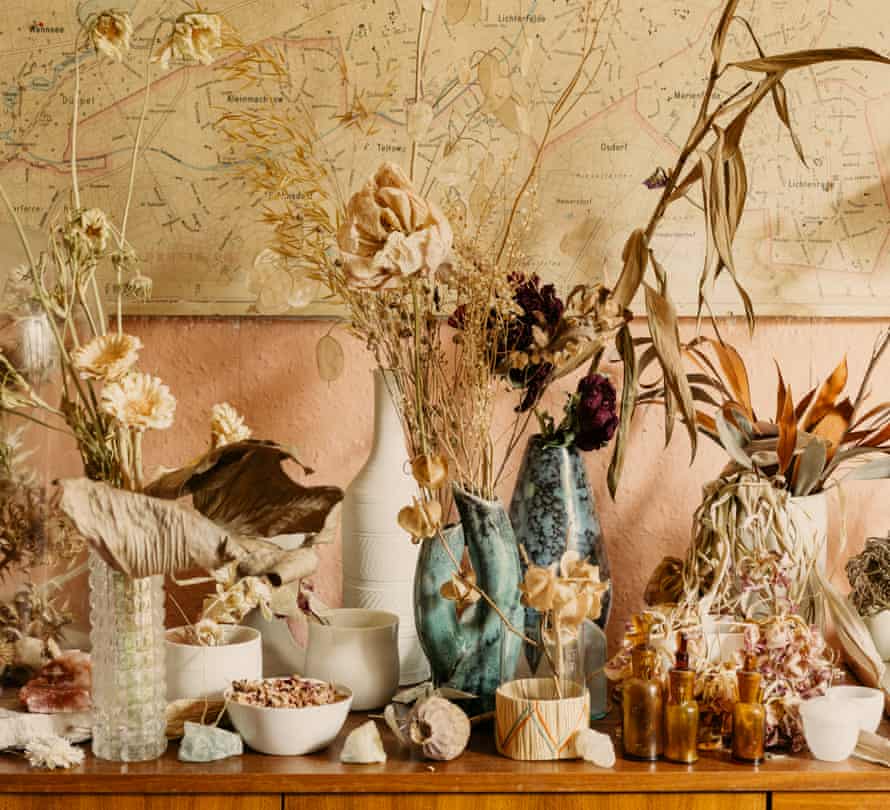
This idea connects with Maggie’s childhood. “When I was a kid, my mum was really sick, and as a result I was withdrawn and shy. I felt awkward in most situations outside my home. From a young age, I realised flowers had an effect on me. They could change my mood. I could get into a peaceful frame of mind and feel happier. When I was six, a neighbour gave me a rose from her garden. She was shocked as she had never seen me smile before – I couldn’t believe its scent. To this day, I use rose fragrance in flower therapy. Whenever I’ve not been feeling so great, I put my trust in flower and plant therapy. It made a difference to my life, and took me out of moments of depression as a child. I’ve never looked back.”
But what makes a home? A house becomes a home when it blurs the lines between ourselves and our surroundings; it represents who we are and where we belong. Maggie describes her home as her sanctuary, reflecting her nomadic personality, her eclectic aesthetic, her profession and a collection of memories. Taking all these qualities, along with a colour palette in dusty peach and gold, it can lift the spirits even on a gloomy day. Add in the “forever flower” factor, and the effect is one that is texturally layered with masses of character.
Petal power
Top tips for drying, dyeing and adding scent to flowers, by Maggie Coker
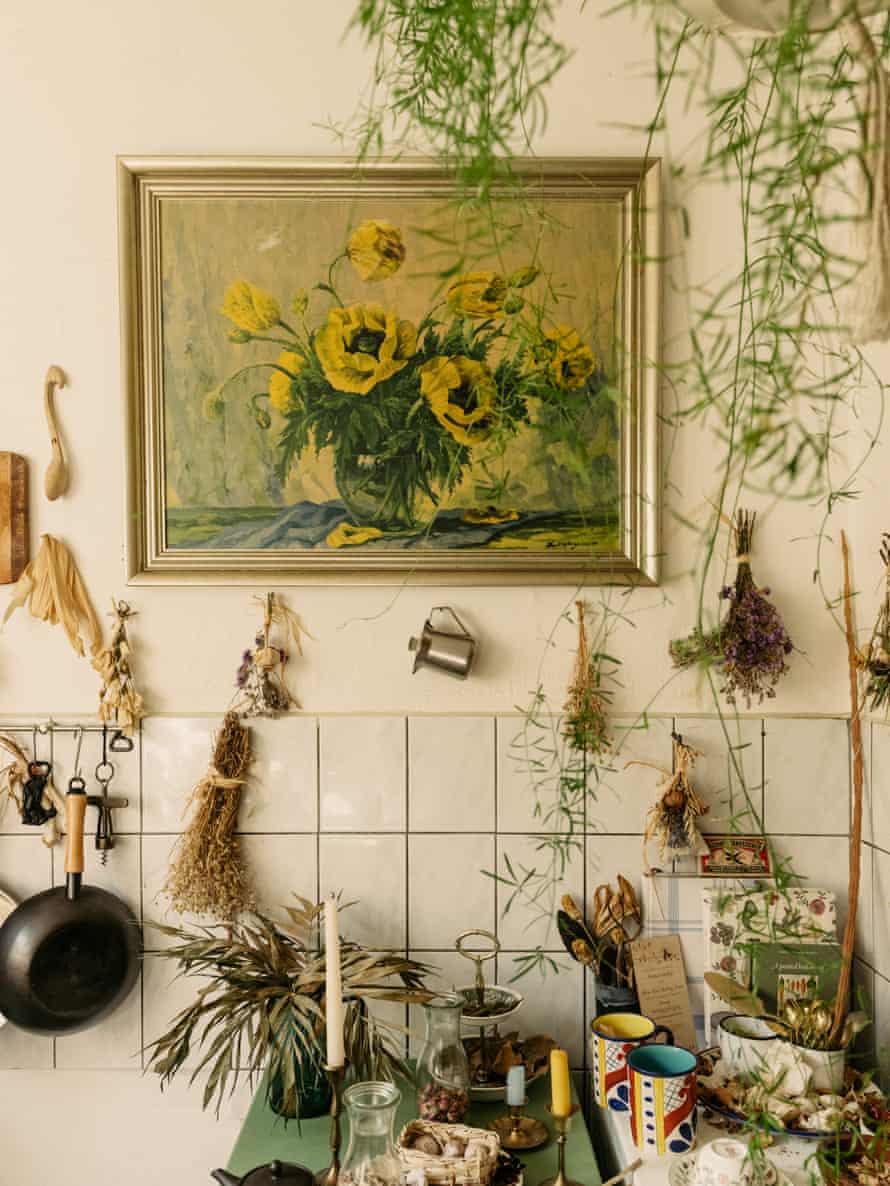
Find a dedicated spot to dry flowers. I use my kitchen. Sometimes I dry them upside down, sometimes I leave them as they are. I don’t like to manipulate the flowers too much beyond expanding the petals to get a fuller shape, which shrinks as the flowers dry.
To keep roses from
drying in too tight a shape, carefully open up the petals. Then they look like fresh flowers again.
If you travel a lot, dried flowers are a great alternative to fresh ones. I like pampas grass, as it has a lot of personality, either dyed or faded. Lunaria annua ‘Honesty’ is one of my favourites, as it isn’t easy to get or to dry.
To add colour to dried flowers, try using natural dyes. I use avocado to dye some of my grasses, boiling down the seeds to get the colour and then painting the condensed liquid on to leaves already bleached by the sun.
For better feng shui, I regularly dust the dried flowers, but also use a homemade cedarwood or eucalyptus spray to lift them and keep insects away.
For flowers that keep their colour, try delphiniums, peonies, hydrangeas
and roses.
To make a natural potpourri, wild rose petals and lavender will keep their scent. I use essential oils to set the mood for the day and make cleansing sticks from dried sage and thyme, which I burn to change the energy of the space. My house smells great.
This is an extract from The New Naturalists: Inside the Homes of Creative Collectors by Claire Bingham, published by Thames and Hudson, £25. Order a copy for £21.75 at guardianbookshop.com

